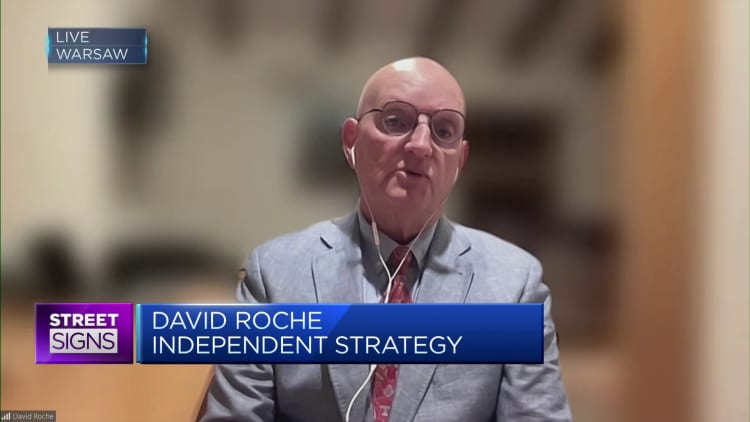BOJ leaves charges unchanged, sustaining ultra-loose financial coverage
An undated editorial {photograph} combining photographs of Japanese yen financial institution notes with inventory market indicators.
Javier Ghersi | Second | Getty Photographs
Japan’s central financial institution maintained its ultra-loose coverage and left charges unchanged on Friday, aware of the “extraordinarily excessive uncertainties” on the expansion outlook domestically and globally.
In a coverage assertion after its September assembly, the Financial institution of Japan mentioned it will preserve short-term rates of interest at -0.1%, and cap the 10-year Japanese authorities bond yield round zero, as broadly anticipated.
“With extraordinarily excessive uncertainties surrounding economies and monetary markets at residence and overseas, the Financial institution will patiently proceed with financial easing, whereas nimbly responding to developments in financial exercise and costs in addition to monetary circumstances,” the Financial institution of Japan mentioned in its coverage assertion Friday.
At its earlier coverage assembly in July, the BOJ loosened its yield curve management to permit long run charges to maneuver extra in tandem with rising inflation in Governor Kazuo Ueda’s first coverage change since assuming workplace in April.
The yield curve management is a coverage instrument the place the central financial institution targets an rate of interest, after which buys and sells bonds as obligatory to realize that concentrate on.
The transfer to broaden the permissible vary for 10-year JGB yields of round plus and minus 0.5 proportion factors from its 0% goal to 1% was seen as the beginning of a gradual departure from the yield curve management coverage enacted by Ueda’s predecessor.
Many economists introduced ahead their forecasts for a faster exit from the BOJ’s ultra-loose financial coverage to someday within the first half of 2024 after Ueda informed Yomiuri Shimbun in an interview printed Sept. 9 that the BOJ may have adequate knowledge by the top of this 12 months to find out when it may finish unfavourable charges.
Sustainable inflation
Regardless of core inflation exceeding the Financial institution of Japan’s acknowledged 2% goal for 17 consecutive months, BOJ officers have been cautious about exiting the coverage, which was put in place to fight many years of deflation on this planet’s third-largest economic system.
This is because of what the BOJ sees as a scarcity of sustainable inflation, deriving from significant wage development that it believes would result in a constructive chain impact supporting family consumption and financial development.
Core inflation — which contains oil merchandise however excludes unstable contemporary meals costs — got here in at 3.1% in August, supporting the BOJ’s projection.
Wage development, output hole — which measures the distinction between an economic system’s precise and potential output — and worth expectations are amongst elements the Financial institution of Japan has prioritized as significant inflation drivers.
“Japan has the very best likelihood in a era to maneuver from a deflationary atmosphere to 1 that is a little more inflationary and one which has a level of permanence,” mentioned Oliver Lee, consumer portfolio supervisor at Eastspring Investments.
“The important thing factor is wages. Japan must see significant and sustained wage inflation, which might have a psychological impression on consumption,” he mentioned. “Hopefully this could possibly be the beginning of a virtuous cycle for financial development, nevertheless it’s nonetheless too early to say whether or not that may pan out. We most likely want one other six to 12 months to see the place we’re on that entrance.”
Elevating rates of interest prematurely might derail development, whereas an extreme delay in tightening coverage would weigh additional on the Japanese yen and lift the dangers of monetary fragility.
Any delay would additionally additionally put extra strain on Japanese Prime Minister Fumio Kishida, who pledged to assist customers address rising dwelling prices at a cupboard reshuffle final week. He additionally vowed to make sure the world’s third-largest economic system will emerge meaningfully out of deflation with wage development that persistently exceeds the speed of inflation.
Japan’s gross home product development for the April-June quarter was revised right down to an annualized 4.8% from the preliminary 6% print because of weak capital spending.
Whereas output hole grew 0.4% within the second quarter to mark the primary improve in 15 quarters, uneven home financial knowledge and an unsure international financial outlook have made it extra complicated for policymakers.
— That is breaking information. Please verify again for updates.




